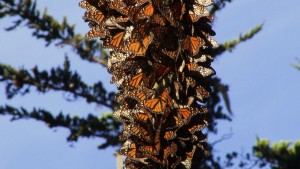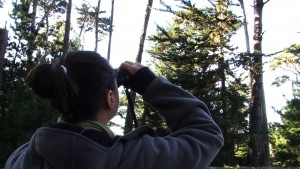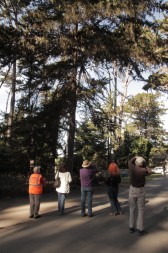Bugs normally don’t garner much adoration from people, but monarch butterflies (Danaus plexippus) are an exception. Monarch butterflies are arguably the most beloved and instantly identifiable insect in the United Sates. Perhaps nowhere else does an insect receive higher regard than in Pacific Grove, CA, which has gone so far as to adopt the moniker Butterfly Town, USA. Stu Weiss, Chief Scientist at the Creekside Center for Earth Observation, has been studying monarch butterflies for over two decades. “They represent the insect world, which is the most diverse order of life on Planet Earth.” said Weiss “And they’re good ambassadors because they’re beautiful.”
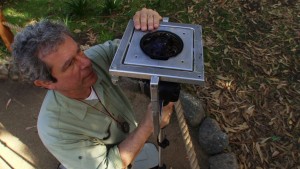
Weiss uses a technique called hemispherical photography to analyze monarch butterfly overwintering habitat. While facing north, he aims his digital camera directly up towards the forest canopy. The camera is affixed with a 180° fish-eye lens that produces an image of the sky partially blocked by the trees. Weiss takes a series of these images at specific locations corresponding to a grid. With the help of some special software, he is able to map out how much sunlight and wind is able to penetrate the forest at specific locations. This information is important because overwintering monarchs prefer microhabitats that provide both plenty of sunlight, but are protected from the wind.
With the information gleaned from his hemispherical photography, Weiss is able to characterize the monarch habitat and provide guidance on the long-term management of the major monarch overwintering sites. The City of Pacific Grove placed Weiss in charge of developing the habitat restoration and management plan for the Monarch Grove Sanctuary, and he has overseen the planting of additional Eucalyptus trees to improve wind protection for the monarchs. While small in size, the Sanctuary is a vital destination for monarchs and a major tourist attraction boasting visitors from around the world.
In addition to their pleasing appearance, monarch butterflies are famous for their extended migrations. The type of lengthy annual north-south migration undergone by monarchs is more commonly associated with birds. Monarchs spent most of the year in close proximity to their host plant, milkweed. Each fall, as the days grow shorter and the milkweed recedes, monarchs journey to their overwintering grounds.
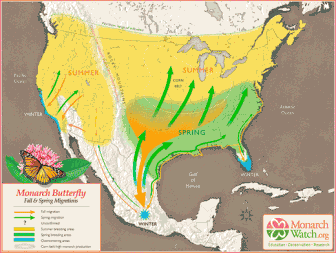
The Rocky Mountains split the monarchs into two populations. Those butterflies that spend their summers east of the Rocky Mountains descent upon forests located within the Trans-Mexican Volcanic Belt Pine-Oak Forests not far from Mexico City. The monarchs that spend their summers west of the Rockies wait out the winter months in forests along the California Coast. Overwintering monarch populations return to the same forests year after year, even though none of the individual butterflies have ever been to these locations before.
